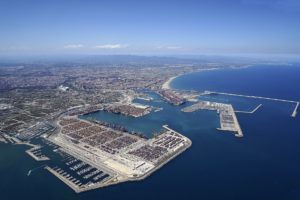
- The Port Authority of Valencia announces a €6.9 million of its own telecommunications infrastructure
- The deployment of the network will optimise the use of resources and reduce emissions, promoting a more sustainable port management model
- The project, co-funded by the European Union through the Connecting Europe Facility (CEF) programme, will enable more than 25,000 devices to be connected

Valencia, 4 November 2025 – The Port Authority of Valencia (APV) has awarded Orange Spain the contract for the development and implementation of Valenciaport’s private 5G network, for a total amount of €6.9 million (including VAT). This network will offer advanced, secure and efficient technological solutions for the growing operational complexity of Valencia’s port facilities.
This is a strategic project co-financed by the European Union through the Connecting Europe Facility (CEF) programme, which will provide the APV port system with its own secure and flexible telecommunications infrastructure.
The network will initially be implemented in the port of Valencia, with a maximum period of 36 months for its deployment and entry into operation. With this new infrastructure, the APV will have direct control over the management of its communications.
The proposal that Orange will develop for the APV responds to the need for a key node in the Mediterranean corridor of the Trans-European Transport Network (TEN-T), which manages three container terminals, bulk facilities and a maritime transport system that allows for high-volume loading and unloading.
The aim is for the communications network to be independent of conventional operators and adaptable to the needs of the logistics sector. Thanks to this technology, more than 25,000 devices, including vehicles, environmental sensors, drones and security cameras, will be able to be connected without relying on cables or ties to third parties.
Sustainability at the port
The rollout of the 5G network will reduce dependence on cabling and vehicles for inspections, facilitating the use of drones and IoT sensors. This digitalisation optimises the use of resources, reduces emissions and thus strengthens the port’s commitment to environmental sustainability.
A benchmark in port digitalisation
The solution will incorporate the highest cybersecurity standards, along with a double perimeter firewall and network segmentation, ensuring the protection of critical data and communications.
It will also enable the integration of high-resolution cameras, artificial intelligence-powered drones and critical communications for port police, ensuring advanced surveillance and rapid response to incidents. The project also envisages the use of augmented reality for remote maintenance tasks and advanced training, facilitating real-time technical assistance and operator training.

